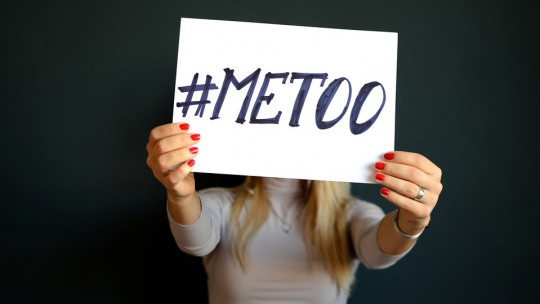
Adolescence is a time of change and evolution. At this stage, in which both physical and mental maturation occurs, adolescents begin to distance themselves from the family and authority figures to begin to give increasing importance to the peer group, people who, like them, are in search of his identity.
However, this approach to their peers does not always result in a positive interaction, but it is sometimes possible that an abusive relationship is established, the result being bullying or, if new technologies are used, cyberbullying.
The invisible violence
“After the dissemination of that image in which he appeared naked, Fran found that they kept receiving messages laughing at his physique. The situation was not only due to a virtual level, but in class the mockery and humiliation were constant, even reaching to find the photograph attached to poles both inside and outside the school. His parents filed several complaints in order to stop the situation, but despite all the damage had already been done. One day, after two months of continuous teasing, Fran “He did not return home. He would be found a day later, hanged from a tree in a nearby field, leaving behind a farewell letter.”
The description of the above events belongs to a fictitious case, but at the same time it has a very real resemblance to the reality that many harassed young people experience. In fact, its development has been based on several real cases. To better understand the situation, it is essential to better understand what cyberbullying is
What is cyberbullying?

Cyberbullying or cyberbullying is a subtype of indirect bullying that is carried out through social networks and new technologies As in all types of bullying, this type of interaction is based on the intentional emission of behavior with the aim of harming or harassing another person, establishing a relationship of inequality between both subjects (that is, the person having dominance aggressor on the attacked) and being stable over time.
However, the fact of applying new technologies makes these characteristics of harassment appear nuanced. While the existence of a relationship of inequality does always occur, it must be taken into account that the triggering stimulus can be a photo, a comment or content that has been published or broadcast without the intention of harming anyone, being harassment. derived from a misuse of this publication (the intention to harm being located in this third person).
For example, a friend or the same individual posting or sending someone a photo in which a colleague goes wrong may not imply that the latter wants to humiliate him or her, but a third person may use it differently than intended. In the case of cyberbullying, It must be taken into account that what is published on the Internet can be seen by numerous people (many of them unknown) and at any time, so that a single harassment situation can have repercussions in numerous time intervals.
Besides, the victim has a greater feeling of helplessness than in other types of attacks, since because of the networks the attack can reach you at any time and place, and you also do not know when it will be witnessed or by whom it will occur. Finally, unlike in cases of traditional bullying, in cyberbullying the bully can be anonymous.
Types of cyberbullying
Cyberbullying is not a unitary phenomenon that occurs in a single way; There is a wide variety of forms ranging from harassment of the victim and social exclusion to manipulation of data to harm a person in their own name. The Internet is an environment known for the great variety of technological possibilities it offers, and unfortunately this also applies when using this medium. as a tool to harass others
In the case of cyberbullying, strategies to harm someone can use all the potential of the network, from stored and easily disseminated photographs to the use of voice recordings or photomontages.
Clear examples are photographs and videos taken and published without consent for the purpose of blackmail or humiliation, direct threats through various platforms or websites created specifically to ridicule the victim. Furthermore, depending on the objective of the harassment, we may encounter cases such as Sextortionin which the victim is blackmailed in exchange for not publishing or spreading photographs or videos of a sexual nature.
On the other hand, it must be taken into account that the most common cyberbullying, that carried out by children and adolescents, can exploit all imaginable resources, given that people belonging to the generation of digital natives They already learn to use all these tools from their earliest years.
The difference with grooming
It is important to highlight that cyberbullying occurs between minors or at least between groups of equals. It is thus distinguished from grooming, in which an adult harasses a minor over the Internet (usually for sexual purposes). In this second case, it is common that harassment through the Internet be associated with crimes
What happens to the victim of cyberbullying?
It is common to observe a marked decrease in the level of self-esteem and self-concept in victims of cyberbullying, sometimes even blaming themselves for the situation. Insecurity, a feeling of lack of competence and the shame of not being able to solve the situation are elements frequently found in cases of cyberbullying.
Furthermore, many of the victims are coerced to maintain the law of silence for fear of the consequences of reporting. This causes a decrease in academic performance, which in turn feeds back into a decrease in self-esteem. Victims of continued cyberbullying also perceive less social support, and in the long run future emotional ties with third parties become difficult, inhibiting social development.
Likewise, when cyberbullying is very intense and lasts for months, it is possible that the victims end up presenting personality or mood pathologies, such as severe depression or social phobia, even reaching (as in the fictitious case recreated above) lead to the victim’s suicide.
Prevent cyberbullying
In order to detect cases of cyberbullying, some signs that may be useful would be the monitoring and surveillance of changes in habits and the use of devices with Internet access (including concealment when they are used), lack of attendance at class, abandonment of favorite activities, drastic reduction in school performance, changes in the way of eating, weight variations, vomiting and diarrhea for no apparent reason, lack of eye contact, fear of recess, excessive closeness to adults, apathy, or lack of defense against jokes that may seem innocuous.
What to do if cyberbullying is detected?
In the case of detecting a situation of this type, it is necessary to establish fluid communication with the student and his family, making him see that he is experiencing an undeserved situation for which the minor is not to blame, helping to report the case and making people feel continued support. It is essential to teach and help collect evidence of harassment (such as screenshots or the use of programs that record conversations), in order to prove its existence.
To remedy the existence of cyberbullying, the establishment of preventive measures is essential. Different methodologies, such as the KiVa method, have proven the usefulness of working with the entire class group and especially with those students who witness the aggression, so that the aggressor perceives rejection of his actions and does not see his behavior reinforced. .
In the same way, it is essential to work with the attacked student and the aggressor student, in order to show support and improve the self-esteem of the former and awaken the empathy of the latter, making them see the possible damage that their behavior can cause both to the victim and to others ( including himself).
Cyberbullying, at a legal level in Spain
Virtual harassment involves a series of serious crimes that can lead to prison sentences of several years However, it must be considered that in Spain only from the age of 14 can a criminal charge be brought, so prison sentences for the most part do not apply.
Despite this, the legal system has a series of disciplinary measures that can be put into practice in these cases. Furthermore, although the legal responsibility lies with the minor aggressor in the first place, those legally responsible for the minor and the school where the bullied and the bully are related also have it. They will be responsible for assuming compensation to the harassed as well as any sanctions that may apply to them themselves.
In a case of cyberbullying The crimes of induction to suicide, injuries (physical or moral), threats, coercion, torture may occur or crime against moral integrity, crimes against privacy, insults, violation of the right to one’s own image and the inviolability of the home, discovery and disclosure of secrets (including the processing of personal data), computer damage and identity theft.
The corrective measures proposed for the aggressor include weekend stays, performance of socio-educational tasks, benefits for the benefit of the community, probation and a restraining order.
A final thought
The current study of the phenomenon of cyberbullying makes it clear that there is still much to work on, especially taking into account the constant evolution of technology and networks (new trends and applications appear). Furthermore, taking into account that new generations are born in an increasingly virtualized environment, the preventive policies that are currently applied should be brought forward, moving from being carried out in Secondary Education to providing basic notions in Primary Education.
In the same way, Greater training is necessary in this regard in professional sectors that deal with this type of cases Research in this regard is relatively scarce and very recent, requiring the creation of increasingly effective measures and protocols that can help put an end to this scourge and improve the safety and quality of life of youth.
A psychosocial approach is necessary to end the problem of cyberbullying. This is a task that can be accomplished if a series of social and cultural changes occur, among which are the development of awareness on the issue and the development of policies and school intervention methods to prevent this phenomenon. The KiVa method, for example, points in this direction, and has proven to be very effective. What it is about is not intervening only in victims and abusers, but in the entire social fabric that surrounds both.








